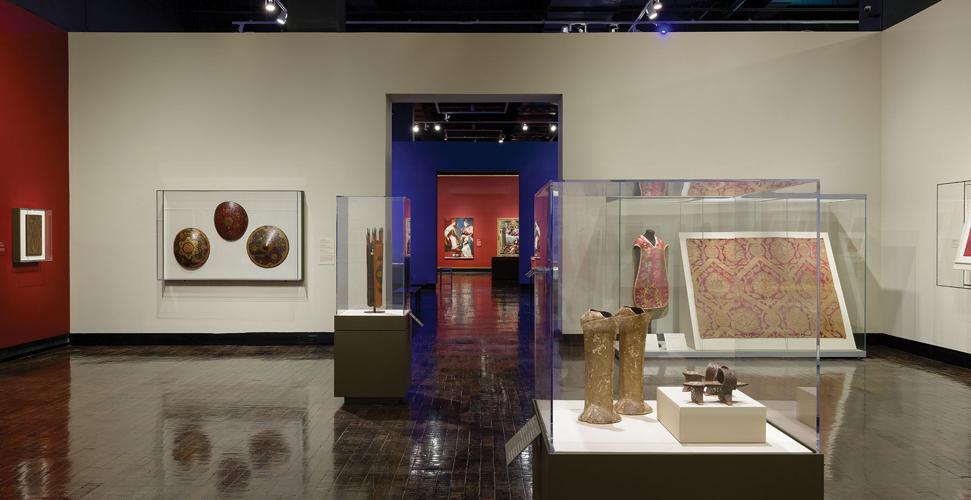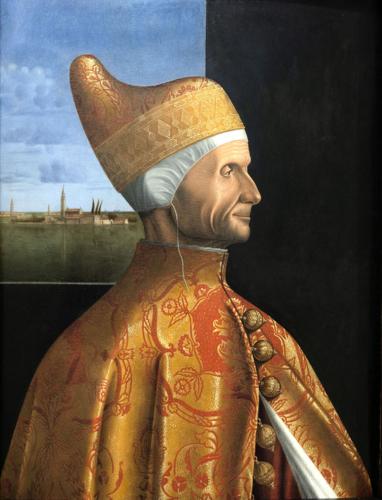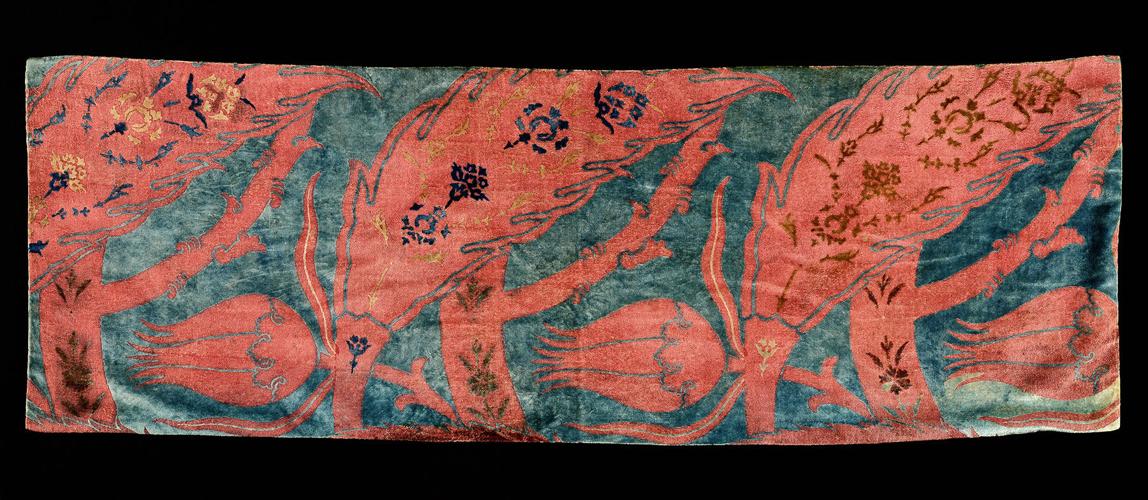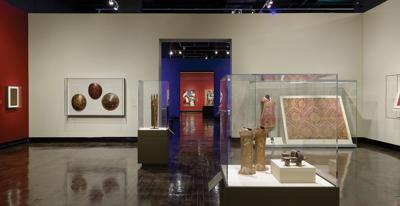The relationship between the Ottoman Empire and the Republic of Venice, the two most powerful forces in the eastern Mediterranean Sea for four centuries, is typically described as a series of conflicts. Between the 15th and 19th centuries, the seven Ottoman-Venetian Wars were brutal, bloody affairs, including some of the biggest maritime battles in history. They’re depicted in paintings so full of warring, smoke-filled galleys and galleasses that it can be difficult to see the sea beneath them.
But when there is conflict, an exchange is inevitable — like when your car door dings someone else’s and a spot of paint transfers between the two. Such exchange is the locus of the Frist Art Museum’s summer show Venice and the Ottoman Empire, a traveling exhibition of more than 150 incredible artifacts from Venice’s seven civic museums, Fondazione Musei Civici di Venezia and the University of Zadar’s museum in Croatia. It was co-curated by Stefano Carboni and the Frist’s curator-at-large, Trinita Kennedy, who previously worked together on the Metropolitan Museum of Art’s show Venice and the Islamic World.
While engaged in their on-again, off-again wars, the Venetians and the Turks were trading partners, with a network of Venetian merchants traveling throughout Ottoman territories and importing spices, textiles and delicate metalwork, and the Ottoman merchants doing the same. All those wars exposed the wealthiest folks to new designs, and craftspeople incorporated these elements to meet a growing demand for fresh signifiers of opulence and style. (There is no mention in the exhibition of the slave trades that were a point of competition and profit for the two superpowers, and discussions of production processes are minimal. One small parenthetical note, much like this one, acknowledges that the nimble little fingers of child labor have “long been part of the textile industry.”)

Fragment of printed cloth, first half of the 20th century. Mariano Fortuny textile factory, Venice.
As a display of cross-cultural exchange, Venice and the Ottoman Empire is diverse in its materials and broad in its themes. The books are some of my favorites: the very first illustrated cookbook from 1570, and a merchant’s arithmetic book open to a guide to hand signals for different numerical values. An astoundingly beautiful qibla indicator — a tool to determine the direction of prayer to Mecca — is worth the price of your ticket alone. Luxury fabrics have an especially significant place in the story. Red and gold textiles, with pomegranate and arabesque Ottoman designs on silk and velvet, appear in nearly every room of the show — even showing up as a backdrop to a 15th-century painting of the Madonna and Child.
The most prominent interchange here is happening on the level of the craftspeople, but the exhibition devotes more of its attention to the people calling the shots (pun intended), because (of course) that’s who could have their portraits made. Most prominently featured is the head of the colonial Venetian empire — an official called the doge — who was elected by the oligarchical class. I feel obligated to explain that Trump and Musk’s naming of the “Department of Government Efficiency” is a reference to the cryptocurrency Dogecoin, and at best, the deeper reference to the doge of Venice is politically convenient but almost unquestionably coincidental.

"Portrait of Doge Leonardo Loredan," Vittore Carpaccio, ca. 1501–5.
There’s a notable effort to cast the relationship between the two empires as “usually” peaceful, with the intention of preserving their economic partnership. Venetian ambassadors, sent to other cities to protect the interests of the merchants, were the first of their kind. But while the show’s emphasis is firmly on commerce and trade during peacetimes, the military artifacts are some of its most interesting. Of special note is a 17th-century silk Ottoman banner emblazoned with calligraphic verses from the Qur’an, flown while in battle, that was recently restored and will exhibit only at the Frist.
And finally, we’ve got to talk about the boat. In 1583, the cargo ship Gagliana Grossa sank while it was transporting a huge number of round glass window panes, which had been ordered (in a coded letter!) by a Venetian diplomat on behalf of Sultan Murad III. The shipwreck is the show’s major hook, but its massive room — illuminated in blue like it’s underwater — has no boat. You simply cannot do a shipwreck room and not have a model or illustration of the boat, or any boat. The room is mostly window panes laid flat on tables.
There’s a common issue among some touring historical exhibitions — a particular way of presenting history that skews so optimistic as to be disingenuously apolitical. The fact that Islamic and Christian empires experienced cooperation and economic and artistic success does not supersede the bloody root cause: empire and its endless wars. At one point, we’re told, there wasn’t a war for a whole 72 years, which may be a long time, but also isn’t.
The ramifications of empire create the conditions of everyday life. The tension is elemental, the friction necessary to the exchange, and the conflict impossible to separate from the reciprocity in art. The Frist’s other summer show, Fabric of a Nation: American Quilt Stories From the Museum of Fine Arts, Boston, is a sterling example of how powerful it is when historical artworks are placed as clearly as possible in their context, and how those artworks end up serving us in our better understanding of what life was like at some point in time. The largely Christian Venetian Republic and the Muslim Ottoman Empire are inextricably bound — with violent clashes and periods of tenuous diplomacy equally responsible for this enduring legacy of elaborate metalwork, distinct flavor profiles and the fanciest pillows.





